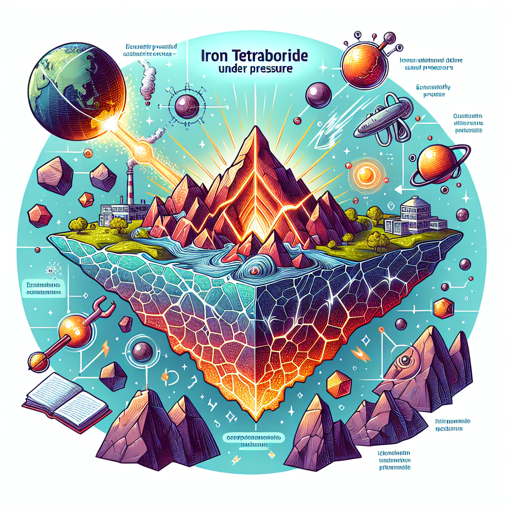Unveiling the Secrets of Iron Tetraboride Under Pressure
Exploring the unique properties of Iron Tetraboride (FeB4) under extreme pressures and its implications in the world of earth sciences.

Unveiling the Secrets of Iron Tetraboride Under Pressure
Introduction
Earth’s secret chest of minerals holds many fascinating treasures, one of which is Iron Tetraboride (FeB4). This intriguing mineral, formed under extreme pressure conditions, is a marvel of nature and a subject of intense study for geologists and mineralogists alike. This article will delve into the properties of Iron Tetraboride under pressure and unearth its significance in the world of earth sciences.
Iron Tetraboride: A Unique Mineral
Iron Tetraboride is a unique mineral that is formed under extremely high-pressure conditions. Its fascinating properties include high hardness, magnetic characteristics, and superconducting abilities. These properties vary significantly when the pressure applied to the mineral changes, making it a subject of great interest in studying the earth’s deep crust and mantle.
The Properties of Iron Tetraboride Under Pressure
The properties of Iron Tetraboride change remarkably under different pressure conditions. Let’s break down these properties in the following table:
| Pressure Conditions | Properties |
|---|---|
| Ambient Pressure | Hard, Magnetic, Non-superconducting |
| High Pressure | Soft, Non-magnetic, Superconducting |
As we can see, under ambient pressure conditions, Iron Tetraboride is hard and magnetic but does not exhibit superconducting properties. However, under high pressure, it transforms into a soft, non-magnetic, superconducting mineral.
This transformation under pressure is not just a physical phenomenon but also involves a change in the crystalline structure of the mineral. These changes in properties and structure under pressure provide invaluable insights into the earth’s deep crust and mantle, where such high-pressure conditions exist.
“Iron Tetraboride is more than just a mineral; it’s a pressure-sensing time capsule from the deep earth, providing us with invaluable insights into the conditions and processes occurring deep below our feet.” - Renowned Geologist
Implications in Earth Sciences
The study of Iron Tetraboride under pressure has far-reaching implications in earth sciences. It helps understand the conditions and processes in the deep earth, providing clues about seismic activities, plate tectonics, and even the earth’s magnetic field. It’s a promising area of research in mineral physics, a cross-disciplinary field that combines geology, physics, and materials science.
For more detailed information on Iron Tetraboride and its properties under pressure, you can visit this link.
Conclusion
Unearthing the secrets of Iron Tetraboride under pressure is like opening a window into the deep earth. The unique properties and transformations of this mineral under different pressure conditions offer a fascinating glimpse into the world beneath our feet. As we continue to explore and understand these phenomena, we not only widen our knowledge of earth sciences but also pave the way for new technological advancements that can harness these unique properties. The story of Iron Tetraboride is just one of the many captivating tales that our planet’s mineral chest has to offer, and each tale brings us one step closer to understanding the intricate workings of our incredible planet.